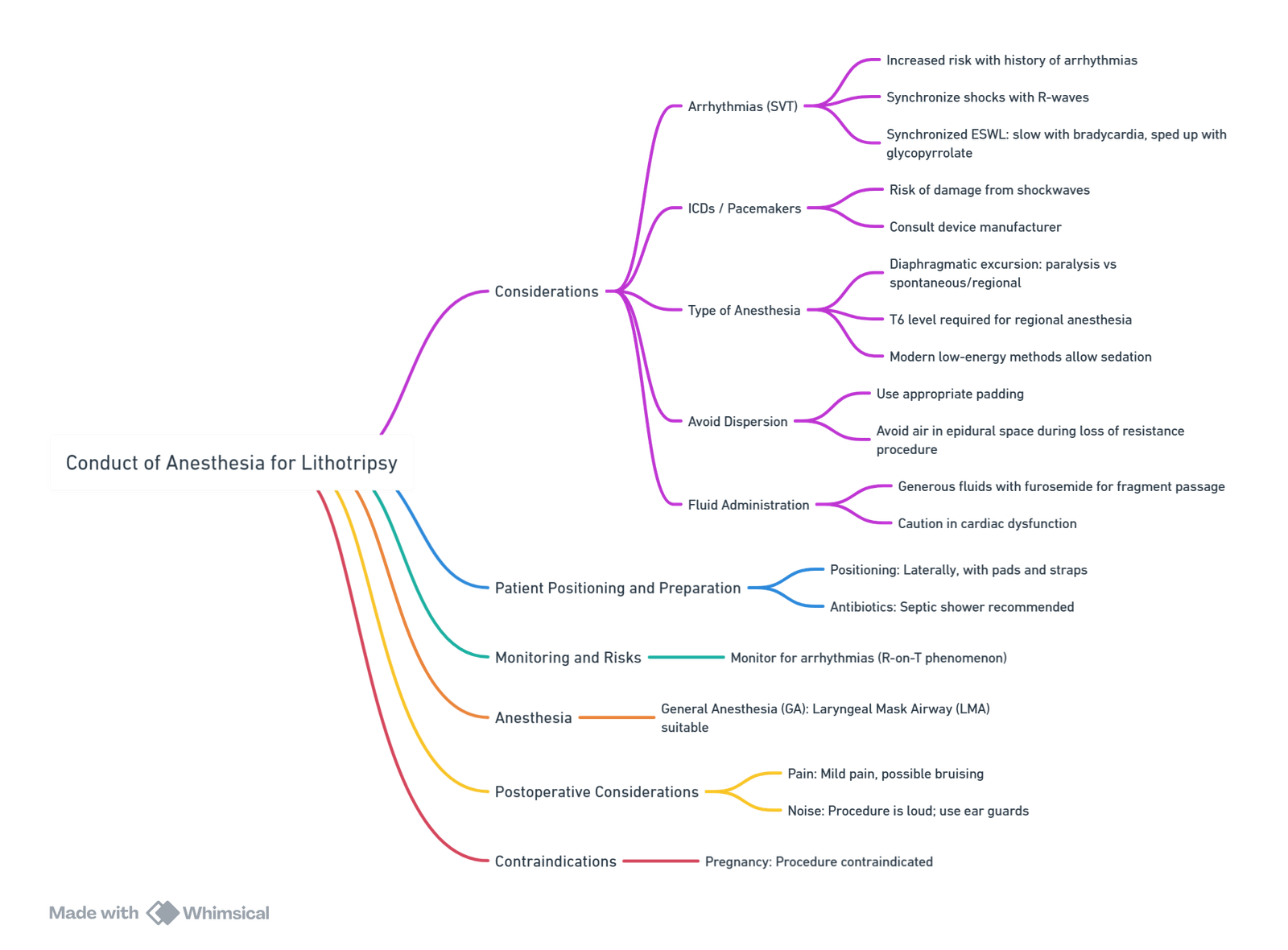{}
Lithotripsy
Introduction
Procedure
- Non-invasive fragmentation of renal stones using pulsed ultrasound.
- Duration: Usually 20-40 minutes.
- Anesthesia: General Anesthesia (GA) or Laryngeal Mask Airway (LMA).
Historical Context
- Initially, extracorporeal shock wave lithotripsy (ESWL) required patients to be suspended in a water bath in a semi-sitting position, causing issues for anesthetists.
- Advancements in the 1980s eliminated the need for a water bath.
- Recent refinements in ultrasound technology have reduced discomfort, making anesthesia or sedation necessary for only a few patients.
Conduct of Anesthesia for Lithotripsy

View or edit this diagram in Whimsical.
Preoperative
- Patient History: Refer to previous treatment records due to potential repeated lithotripsy.
- Premedication: Paracetamol or NSAIDs, considering renal function.
Perioperative
- Positioning: Lateral position with arms above the head.
- Procedure: Renal stones located using ultrasound or image intensifier; shock wave focused on stones.
- Antibiotics: Prophylaxis may be required.
Postoperative
- Pain Management: Mild discomfort can be managed with oral analgesics or NSAIDs.
Special Considerations
- Dysrhythmias: Shock waves can cause occasional dysrhythmias, usually self-limiting. Persistent dysrhythmias can be managed by timing shock waves with ECG (refractory period). Anticholinergics (e.g., glycopyrronium 200 micrograms) can increase heart rate and the frequency of delivered shocks.
- Pacemakers: Shock waves can deprogram pacemakers; seek advice from a pacemaker technician.
- Energy Release: Shock wave energy is released at air/water interfaces. Use saline, rather than air, for ‘loss of resistance’ when siting an epidural.
Links
References:
- Allman K, Wilson I, O’Donnell A. Oxford Handbook of Anaesthesia. Vol. 4. Great Clarendon Street, Oxford, OX2 6DP, United Kingdom: Oxford University Press; 2016.
- Ancheta, M. and Swangard, D. M. Anesthetic considerations for extracorporeal shockwave lithotripsy percutaneous nephrolithotomy, and laser lithotripsy. Urinary Stone Disease, 495-509. https://doi.org/10.1007/978-1-59259-972-1_26
Summaries:
Copyright
© 2025 Francois Uys. All Rights Reserved.
id: “bfd58d59-fc82-444d-85e3-5f17ce7733ed”



